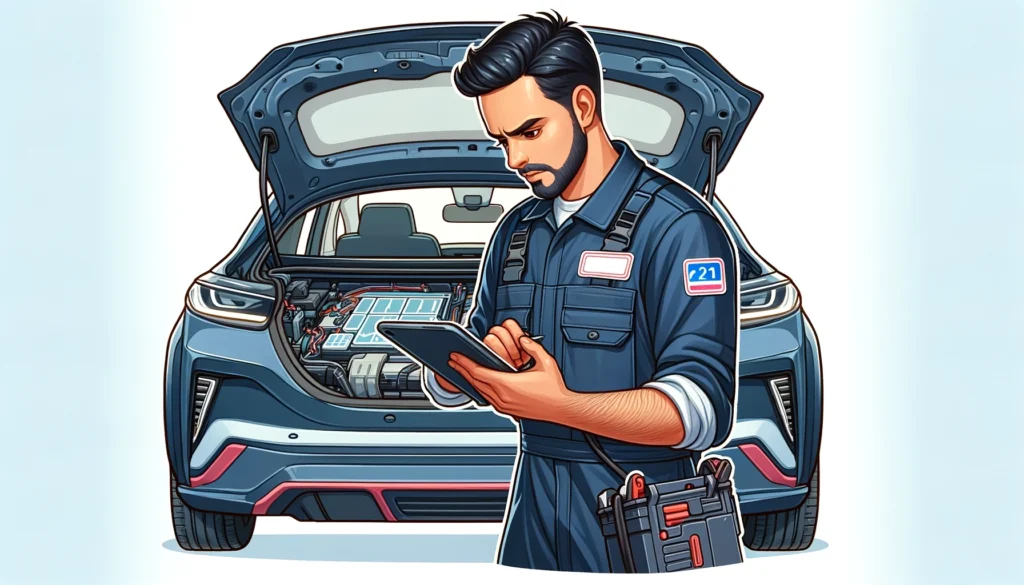Electric vehicles (EVs) have gained significant popularity in recent years, driven by their environmental benefits and the increasing availability of charging infrastructure. One aspect that attracts consumers to EVs is the perception that they are easier and cheaper to maintain compared to their diesel, petrol, or hybrid counterparts. A study conducted by Cap HPI supports this notion, revealing that EVs cost 23% less to maintain over a 60,000-mile or three-year period compared to traditional combustion vehicles. But why is this the case, and what maintenance do electric cars require?
The Simplicity of Electric Cars
One of the primary reasons that electric cars are easier to maintain is their simpler design. Unlike fuel-powered vehicles, EVs do not have complex internal combustion engines with thousands of moving parts. Instead, they are equipped with an electric motor powered by a lithium-ion battery, which stores electrical energy without burning fuel. This streamlined design makes fewer components prone to wear and tear, reducing the likelihood of breakdowns and maintenance issues.
To put this into perspective, a typical petrol or diesel engine can have up to 10,000 moving parts, whereas an electric vehicle may have as few as 100. As a result, electric cars eliminate the need for components such as spark plugs, fuel pumps, exhaust systems, and timing belts, which are relatively high-maintenance parts in traditional vehicles.
Key Components of an Electric Vehicle
While electric cars have a simplified design, they still contain specific components unique to their electric powertrain. These components require proper maintenance to ensure optimal performance and avoid costly repairs. The essential components of an electric car include:
1. Electric Motor: This motor converts electrical energy into mechanical energy, propelling the vehicle forward.
2. Electronic Power Control: This controls the transfer of electricity from various components, ensuring efficient power distribution throughout the vehicle.
3. Inverter: The inverter converts the direct current (DC) supplied by the battery into alternating current (AC) required by the electric motor.
4. Charger: The charger takes electricity from an external power supply and transfers it to the battery for storage.
5. Battery: The battery stores the electrical energy used to power the electric motor. It is crucial to maintain the battery’s health and performance to maximize the vehicle’s range and lifespan.
In addition to these unique components, electric cars share fundamental parts with traditional vehicles, including brakes, steering systems, and suspension systems, which also require regular maintenance.
Servicing an EV
Contrary to common misconceptions, electric cars require regular servicing, just like their fuel-powered counterparts. Routine maintenance ensures the vehicle remains in good condition and operates smoothly. Similar to traditional vehicles, electric cars should undergo an annual full service and an MOT test once they reach a certain age.
The advantage of electric cars lies in the reduced likelihood of uncovering frequent car problems during servicing. With fewer moving parts and a simplified design, the chances of encountering complex issues are significantly diminished. However, it is still important to stay proactive and keep on top of the vehicle’s condition by scheduling regular services, ideally an interim service every six months.
Regular EV Maintenance Tasks
While EVs require less maintenance overall, there are still some routine tasks that need to be performed to ensure their optimal performance and longevity. These tasks include:
- Tire Rotation: Just like traditional vehicles, EVs require regular tire rotation to ensure even wear and prolong tire life.
- Fluid Replacement: EVs also require fluid replacements, including coolant and windshield washer fluid, to maintain the cooling system’s integrity and ensure proper visibility.
- Cabin Air Filter Replacement: Like any other car, EVs have cabin air filters that need to be replaced periodically to maintain clean and fresh air inside the vehicle.
Electric Vehicle Battery Maintenance
The battery pack is one of the most critical components of an electric vehicle. While EV batteries have improved significantly over the years, they still require some attention to ensure longevity. Here are some tips for maintaining the EV battery:
- Avoid Extreme Temperatures: Extreme temperatures, both hot and cold, can negatively impact the battery’s performance and lifespan. EV manufacturers incorporate auxiliary cooling and heating systems to regulate battery temperature. However, it is advisable to park EVs in moderate-temperature environments whenever possible.
- Limit Fast Charging: Fast charging, while convenient for quick recharging, can degrade the battery pack at a faster rate compared to slower charging methods. It is recommended to use fast chargers sparingly and opt for slower charging options whenever feasible to extend the battery’s lifespan.
- Avoid Full Charging or Depletion: Charging the battery to its full capacity or completely depleting it can accelerate battery degradation. Most EVs have settings to limit charging to less than 100 percent, and manufacturers often suggest charging to around 85-90 percent for daily use.
Powertrain and Cooling System
The powertrain components in EVs, including the electric motor, require proper cooling to prevent overheating and ensure optimal performance. EVs employ various cooling methods, such as air cooling or coolant systems, to regulate temperature. Regular checks of the cooling system and coolant levels are necessary to maintain the powertrain’s efficiency.
Brake Maintenance
EVs have regenerative braking systems that allow the motor to slow down the vehicle by recovering kinetic energy, reducing reliance on mechanical brakes. As a result, brake pads and rotors in EVs experience less wear and tear compared to traditional cars. However, regular maintenance of the brake fluid and periodic inspection of the brake pads are still essential to ensure safe braking performance.
Tire Wear
Due to the additional weight of the battery pack, EVs may experience faster tire wear compared to conventional vehicles. It is important to monitor tire tread depth and replace tires when necessary to ensure optimal safety and performance. Some EV models may have specialized tires designed to enhance range, but these tires may have a shorter lifespan.
EVs vs. Hybrids and Plug-in Hybrids
Hybrid and plug-in hybrid vehicles have both electric motors and gasoline engines. While their maintenance routines are closer to conventional cars, the regenerative braking systems in these vehicles also contribute to a longer brake pad and rotor lifespan. However, the maintenance requirements for hybrids and plug-in hybrids are generally higher than those for fully electric vehicles.
Common Problems with Electric Cars

While electric cars have fewer components prone to wear and tear, they are not immune to problems. Some common issues that may arise with electric vehicles include:
1. High Voltage System: Electric cars operate at high voltages, and problems can occur within the electrical system. These issues often require the expertise of trained professionals and involve plugging into the car’s computer and analyzing data.
2. Regenerative Braking: Electric vehicles use regenerative braking, which converts kinetic energy into electrical energy to recharge the battery. Problems with this system can affect braking performance and require specialized attention.
3. Electric Battery and Fluid: Maintaining the health of the electric battery is crucial for the vehicle’s overall performance. Monitoring battery health, ensuring proper charging practices, and addressing any fluid-related issues are essential.
While electric cars can avoid certain traditional engine-related issues like spark plug or timing belt failures, they can still experience problems with other vehicle components, including braking, steering, suspension, tire punctures, and bodywork. Thankfully, these issues can typically be resolved similarly to conventional vehicles with the assistance of a local mechanic at a nearby garage.
The Benefits of Electric Car Maintenance
Overall, the maintenance of electric vehicles is generally easier and less expensive than that of traditional combustion vehicles. The simplicity of their design, with fewer components and moving parts, reduces the likelihood of breakdowns and the need for frequent repairs. This translates into lower maintenance costs over time.
However, it is essential to remember that regular servicing and maintenance are still necessary to ensure the longevity and optimal performance of an electric car. While the potential for complex issues is reduced, staying proactive and addressing any problems promptly is essential for the long-term reliability of the vehicle.
As the popularity of electric vehicles continues to grow, advancements in technology and infrastructure will likely contribute to further simplifying maintenance processes and reducing costs. With ongoing improvements, electric cars are poised to become even more user-friendly and accessible, driving the transition to a greener and more sustainable transportation future.


